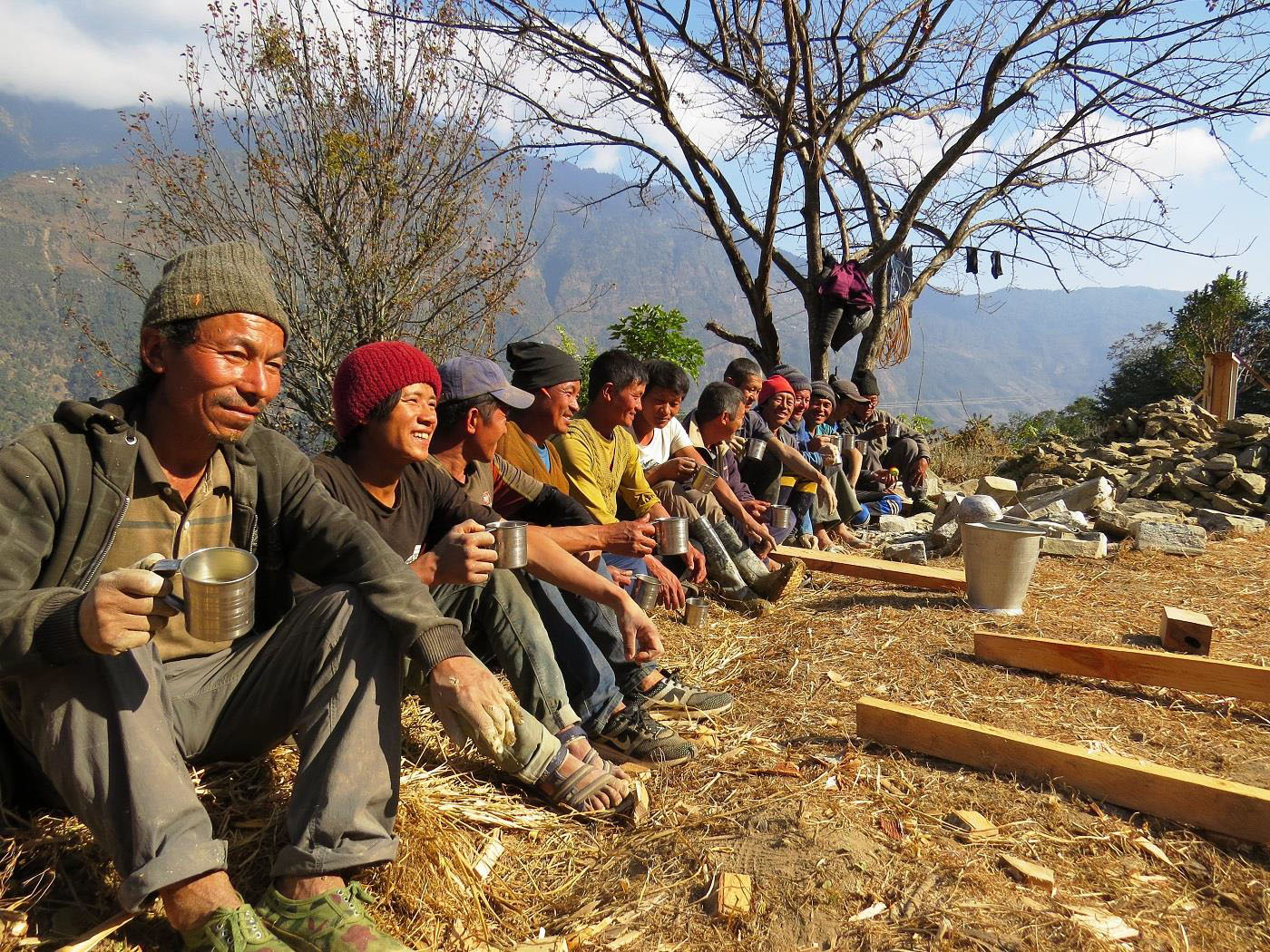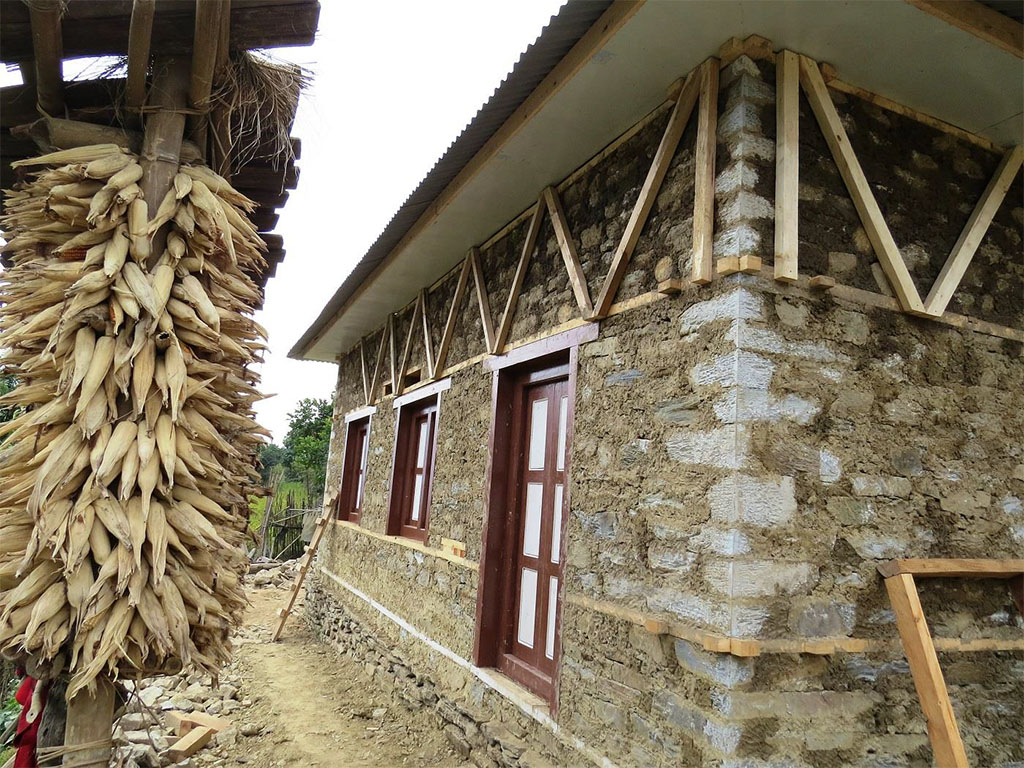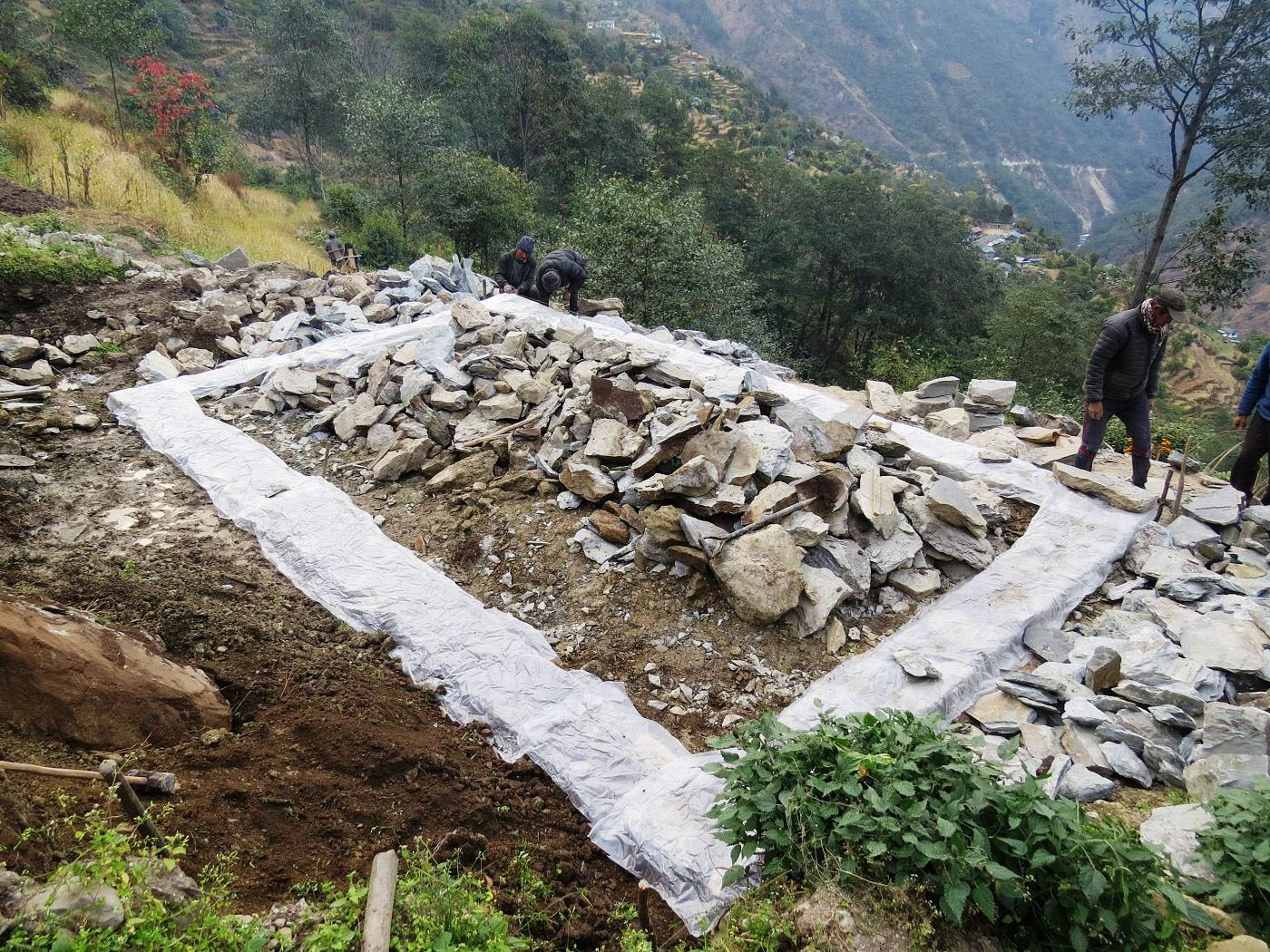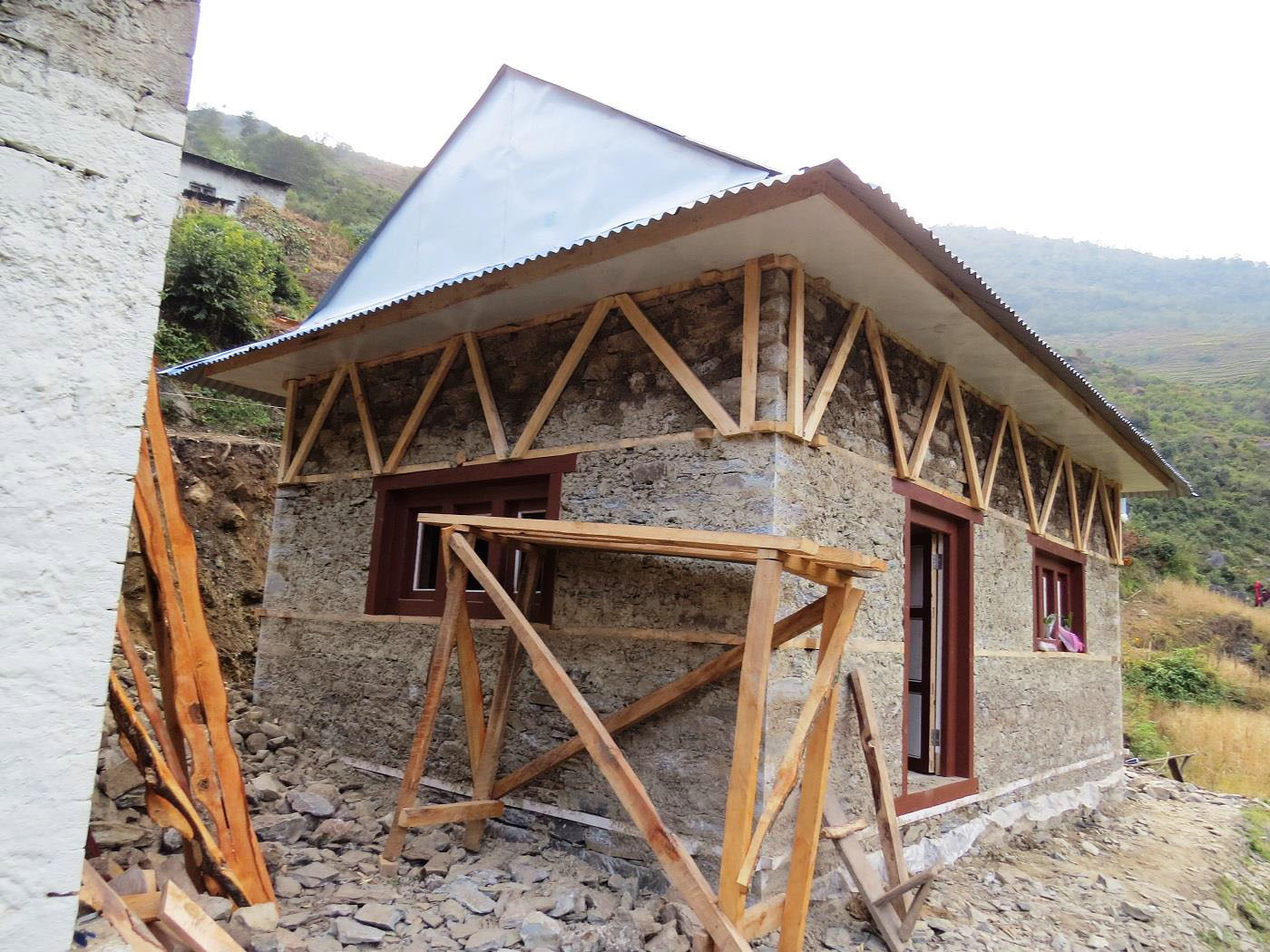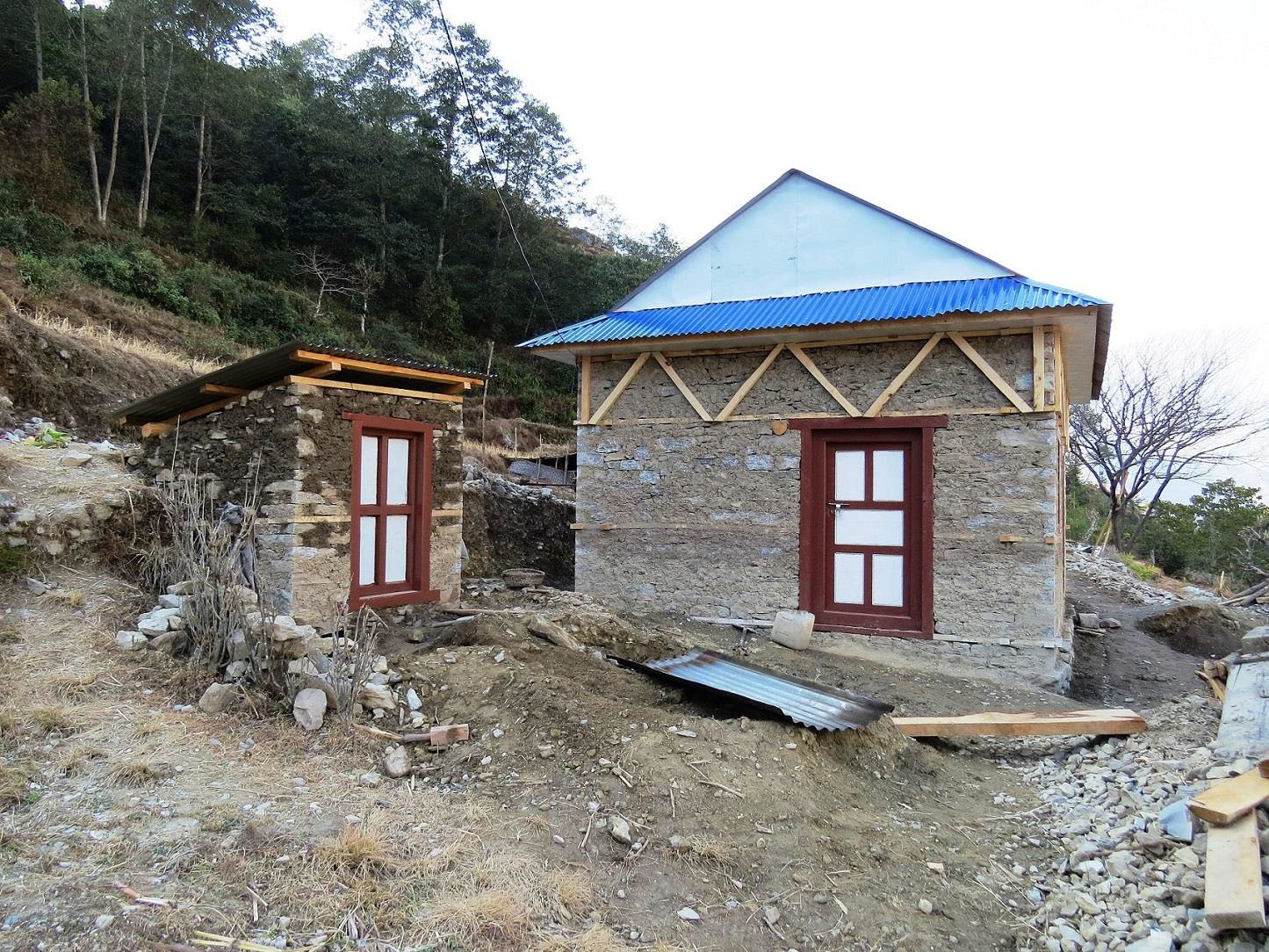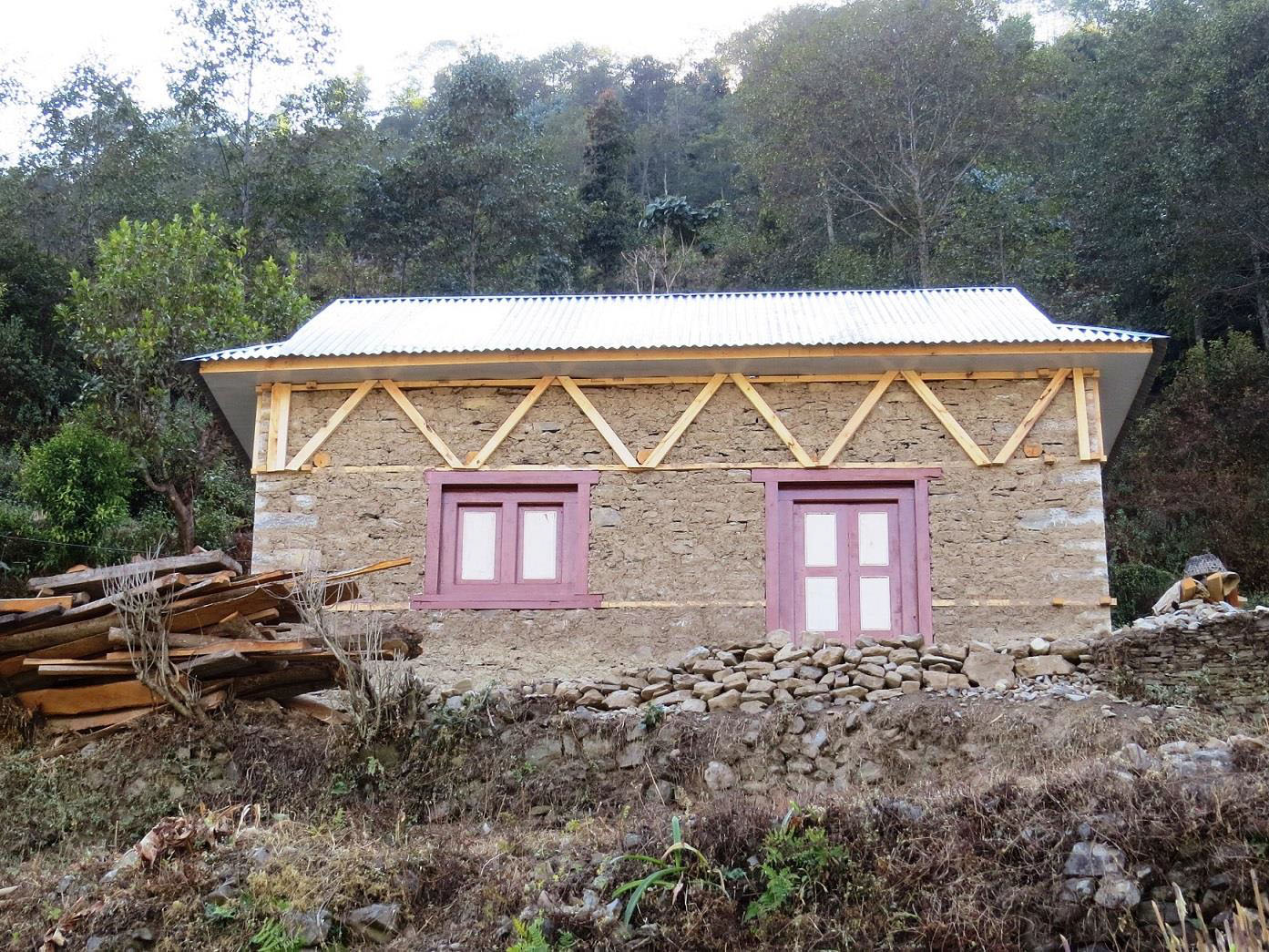As planned at our AGM last May, three earthquake-proof houses financed by our association were completed this winter in the village of Basa-Rapcha, enabling new families to move into a safe and decent home.
This was made possible by the excellent coordination of our local project managers, Yadav and Jase, who organise the work sites, recruit the workforce and supply the tools and materials.
For our part, we also need to make sure that we have enough cash to finance the work in advance, particularly for the purchase of wood, to allow time for the wood to dry out.
With each new phase of this construction project for deprived families, our local correspondents tell us again how grateful the village is and how happy the lucky beneficiaries, chosen by the municipality from the priority families on the list drawn up at the start of the project, are.
With a period of intense cold during this winter, 15 workers were kept busy for 20 days for each house and received a daily wage plus food on the site, which in a period of low agricultural activity constitutes an appreciable additional income.
This technical and financial support for the construction workers represents a major boost for the village. What’s more, the leading carpenters and masons have adopted the innovation of earthquake-resistant construction using local materials, which is an asset for other projects.
These new constructions rely less and less on the re-use of stones or frameworks, due to the lack of materials in good condition to salvage from dilapidated houses or huts.
The association therefore attaches great importance to the uses to which wood is put, from the conditions in which it is felled and dried to the conditions in which it is transported and treated. Closer contacts will be needed with the forestry committee to improve the use of wood and reforestation, as the new houses require more wood.
In the case of Krishna Raï’s house, the first to be built this year, masons had to spend ten days cutting the corner stones that are essential to the structure, as there were not enough stones already cut.
To offset the risk of Sarke’s house becoming damp in the shade, the workers took the initiative of protecting the base of the foundations with a thick plastic covering.
As for the house of Barkhan, a disabled man living with his younger sister, his house on a sunny plot of land was also completed thanks mainly to the active solidarity of the villagers, who helped with the earthworks, transporting the materials and laying a wooden floor. In addition to the house, the family also benefited from the construction of a toilet on the side and an electricity connection.
As this report confirms, by providing financial support, the association is not only meeting essential social housing needs, but also strengthening mutual support between villagers and thereby reinforcing social cohesion.
The association is also delighted with the local initiatives taken to improve the project, such as drainage, access to electricity and sanitation.
At the next Annual General Meeting in May 2019, the association will discuss the continuation of the building project for fifteen other needy families and the search for substantial funding.
Evelyne Pichenot


